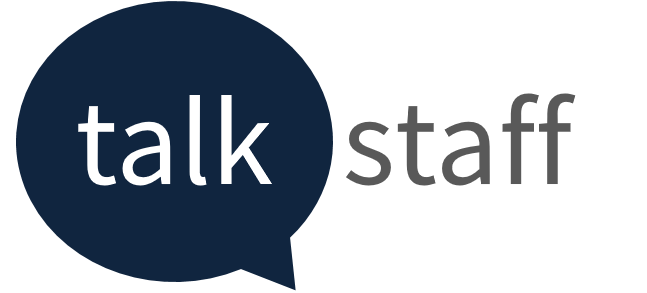
In talent management, competition for skilled professionals continues to challenge organisations. The CIPD Resourcing and Talent Planning Report 2024 provides vital insights into how businesses are addressing these challenges through recruitment, retention, internal development, and more. Let’s explore some of the key findings and the actionable takeaways for employers.
Competition for Talent Remains High
The demand for well-qualified talent has grown significantly over the past year. According to the CIPD survey, 69% of respondents reported an increase in competition for skilled workers. Overall, 84% of organisations attempted to fill vacancies, yet 64% faced difficulties attracting the right candidates.
This rising competition is exacerbated by issues with new hire retention. The report highlights that 41% of organisations who hired new recruits in the last 12 months experienced candidates resigning within the first 12 weeks. These statistics underline the growing pressure on employers to not only attract but also retain top talent in a highly competitive marketplace.


Actionable Takeaway:
Organisations need to revisit their recruitment strategies, focusing on creating compelling value propositions that not only attract talent but also address early attrition risks. Offering clear career development pathways and robust onboarding processes can help keep new recruits engaged.
For expert support with your recruitment challenges, explore our Recruitment Services and how we can help you find and retain top talent.
A Shift Toward Developing Skills In-House
In response to the hiring challenges, many businesses are turning to internal development to meet their talent needs. Over half of the organisations surveyed (56%) reported an increase in internal training and talent development over the past year, compared with the previous year. More companies are also using entry-level and career-returner programmes to build the skills they require.
This shift reflects a growing awareness that developing current employees is not only more cost-effective but also fosters greater loyalty and long-term growth within the organisation.


Actionable Takeaway:
Consider investing in learning and development programmes that enhance the skills of your existing workforce. Developing talent internally can help you stay competitive, especially in industries with critical skills shortages. Programmes that target entry-level employees and career returners also open up new talent pipelines.
Discover how our Organisational Development Services can help you improve your internal talent development strategies.
Improving Pay and Benefits to Combat Recruitment Challenges
In the current labour market, where competition is fierce, many employers have recognised the need to improve their pay and benefits packages to attract and retain employees. The CIPD report reveals that raising pay was one of the most common strategies employed by organisations facing retention issues. However, improving wellbeing support topped the list, indicating that employees are increasingly valuing non-financial aspects of their work experience.
These trends show that while salary remains important, a more holistic approach that addresses both financial compensation and wellbeing is necessary to maintain a competitive edge.


Actionable Takeaway:
Organisations struggling to recruit or retain employees should review their compensation and benefits packages. Ensure that pay is competitive, but don’t overlook the value of wellbeing initiatives such as mental health support, flexible work arrangements, and development opportunities.
Learn more about Payroll Services and how we can help streamline your payroll processes while ensuring your compensation packages are competitive.
The Benefits of Flexible Working Are Increasingly Recognised
The demand for flexible working arrangements continues to rise, and more organisations are recognising their value in both attracting and retaining talent. According to the report, 74% of businesses now advertise at least some jobs as open to flexible working, and 54% offer positions that are ‘open to location.’
Interestingly, hybrid and remote working have proven to be key tools in driving employee engagement and retention. 42% of organisations offering flexible arrangements noted improved engagement, while 45% saw higher retention rates.


Actionable Takeaway:
If you haven’t already, consider implementing flexible work options as part of your talent strategy. This could include hybrid models, fully remote roles, or flexible hours. Such arrangements are not just perks but have become essential in attracting and retaining top talent, especially as employees prioritise work-life balance.
For more on how flexible working can benefit your organisation, read our blog: The Future of Hybrid Working: Trends to Watch.
Small Improvements in Recruiting Diverse Candidates
Diversity and inclusion have become critical factors in recruitment. The CIPD report shows progress in this area, with 40% of organisations being very or extremely active in efforts to recruit diverse board candidates, an increase from 32% in 2022. Additionally, 51% of employers who tried to fill vacancies reported recruiting a more diverse workforce compared with the previous year.
However, while this indicates positive momentum, there’s still more work to be done to ensure diversity at all levels of the organisation.


Actionable Takeaway:
Enhance your diversity and inclusion efforts by reviewing your recruitment processes. Consider targeted outreach, inclusive job descriptions, and support for underrepresented groups to create a workforce that reflects a wide range of backgrounds and perspectives.
Explore the latest diversity and inclusion initiatives from CIPD to learn more about how to create a more inclusive workforce.
Technology Is Transforming Recruitment
One of the most significant trends in recruitment is the increasing use of technology, particularly AI and machine learning. The report highlights that 78% of organisations have increased their use of technology in the recruitment and onboarding process, with nearly a third (31%) using some form of AI or machine learning—a significant rise from 16% in 2022.
AI has proven beneficial, with 66% of organisations that use it reporting improved hiring efficiency, and 62% noting it provided more useful information for resource planning.


Actionable Takeaway:
Consider adopting recruitment technologies like AI and machine learning to streamline processes, reduce biases, and improve efficiency. These tools can help in making data-driven decisions that enhance your talent acquisition efforts.
Read our blog on How AI and Automation Are Revolutionising Recruitment for deeper insights into how technology can transform your hiring processes.
Data Management Is Becoming a Key Priority
The importance of data in workforce planning and resource management cannot be overstated. The report shows that organisations are increasingly using data to track recruitment metrics, including new hire performance, retention effectiveness, and the ROI of recruitment efforts. Notably, 46% of respondents said their CEO had made talent management a key priority in the last 12 months, up from 38% in 2022.


Actionable Takeaway:
Ensure that your organisation is leveraging data to inform its talent strategies. This means tracking key metrics related to hiring, retention, and employee performance to identify areas for improvement and make informed decisions.
Discover how our HR Support Services can help you with effective HR data management, ensuring that your workforce planning strategies are data-driven and efficient.
Conclusion
The findings of the CIPD Resourcing and Talent Planning Report 2024 provide critical insights for businesses navigating the complexities of modern talent management. With competition for talent rising, and organisations increasingly focused on flexible working, pay improvements, diversity, and technology, there is a clear need for strategic, forward-thinking approaches.
As your organisation plans for the year ahead, consider how these trends could shape your talent management strategies. Investing in internal development, embracing flexible work, and utilising technology are just a few ways you can remain competitive in a tight labour market.
For more information and tailored solutions on talent acquisition and management, feel free to contact Talk Staff and discover how we can support your organisation’s growth.
Download the CIPD Resourcing and Talent Planning Report 2024 for a full breakdown of the latest recruitment and retention trends.
FAQs
Why is competition for talent increasing?
Competition is rising due to a shrinking talent pool, higher demand for specialised skills, and increased movement in the job market. Many organisations are struggling to fill roles as a result.
What are the benefits of developing talent in-house?
Developing talent in-house helps organisations retain employees, reduce hiring costs, and create a skilled, loyal workforce that aligns with company culture and goals.
How can flexible working improve employee retention?
Flexible working options such as hybrid models or fully remote positions help employees maintain a better work-life balance, leading to higher satisfaction and retention rates.
How is AI being used in recruitment?
AI is being used to automate tasks like candidate screening, predicting job fit, and improving the efficiency of the hiring process, allowing HR teams to focus
Last Updated on 4 months by Gary Parsons





